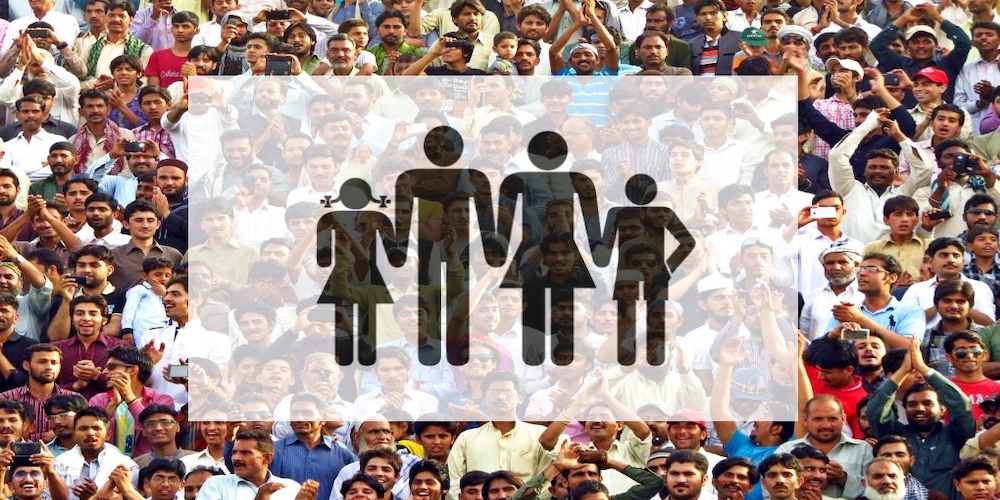Controlling Population

With almost 1.43 billion people, India has overtaken China as the world’s most populous nation. India, however, will have a tougher time than China providing for the bulge, since it is three times smaller in landmass and almost six times behind in GDP
In 2019, Indian Prime Minister Narendra Modi said that a large population was obstructing India’s development. “We have to think if we can do justice to the aspirations of our children,” he said. “There is a need to have greater discussion and awareness on population explosion.”
The new status now as the world’s populous country has sparked a debate in India about whether it should emulate China’s population control policy and create a central law that allows the government to legally, and punitively, enforce a maximum number of children per couple.
Some leaders and analysts are advocating for a two-child policy and saying that a centralized effort is required to control population numbers. In fact, the Supreme Court has been requested to mandate government enforcement of a two-child rule, under which those who obey are offered concessions, such as easy loans, and those who do not are denied such benefits and banned from government jobs.
But there is a nagging suspicion among some opposition parties and analysts that any such control will adversely affect the Muslims who can marry four times. Those supporting this theory say that talks of family-control will further identity politics and deepen the Hindu-Muslim divide before the general elections next year. As it is, the birth rate among Muslims is higher than Hindus overall, though both have declined fast over the years.
Besides, there are those who see a large working-age population as a demographic dividend, and those who see it as a time bomb, the undoing of a nation.
India’s working-age population comprises 500 million people and is growing, while China’s population for the first time is on a decline. Some Indian experts believe these people are India’s greatest asset and can fuel India’s growth, catapulting it from a developing nation to a developed one. They point to a recent surge in international companies shifting their manufacturing from China to India and suggest that Indians could take jobs in countries with aging populations.
Against this background, it is worth noticing what the Government of India is doing in this regard.

The Union Minister of State for Health and Family Welfare, Prof. S P Singh Baghel has stated in a written reply in the Lok Sabha recently that the Government accords top priority to the National Family Planning Program, which is guided by the tenets of the National Population Policy 2000 and National Health Policy 2017, to address the unmet need for Family Planning.
Measures taken by the Government
1. Expanded Contraceptive Choices: The current contraceptive basket comprising condoms, combined oral contraceptive pills, emergency contraceptive pills, intrauterine contraceptive device (IUCD) and sterilization is expanded with inclusion of new contraceptives namely Injectable contraceptive MPA (Antara Programme) and Centchroman (Chhaya).
2. Mission Parivar Vikas is being implemented in thirteen states for substantially increasing access to contraceptives and family planning services.
3. Compensation scheme for sterilization acceptors, which provides compensation for loss of wages to the beneficiaries for sterilization.
4. Post-pregnancy contraception in the form of Post-partum Intra-uterine contraceptive device (PPIUCD), Post-Abortion Intrauterine contraceptive device (PAIUCD), and Post-partum Sterilization (PPS) are provided to beneficiaries.
5. ‘World Population Day & Fortnight’ and ‘Vasectomy Fortnight’ are observed every year to boost awareness on Family Planning and service delivery across all States/ UTs.
6. Under Home Delivery of contraceptives Scheme, ASHAs deliver contraceptives at doorstep of beneficiaries.
7. Family Planning Logistics Management Information System (FP-LMIS) is in place to ensure last mile availability of family planning commodities across all the levels of health facilities.
The Government has been successful in reining in the growth of population, and the following progress has been achieved:
– The Total Fertility Rate declined from 2.2 in 2015-16 (NFHS 4) to 2.0 in 2019-21 (NFHS 5) which is below replacement level.
– 31 out of 36 States/ UTs have achieved replacement level fertility (NFHS 5).
– The Modern Contraceptive usage has increased from 47.8% in 2015-16 (NFHS 4) to 56.5% in 2019-21 (NFHS 5)
– The Unmet Need for Family Planning has decreased from 12.9% in 2015-16 (NFHS 4) to 9.4% in 2019-21 (NFHS 5)
– The Crude Birth Rate (CBR) has declined from 20.8 in 2015 (SRS) to 19.5 in 2020 (SRS).


